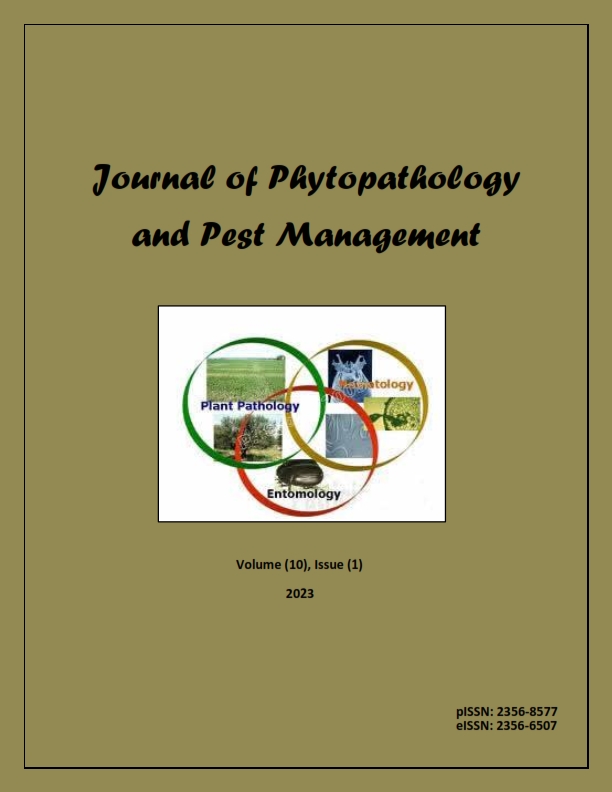Morpho-molecular identification and management of Erysiphe heraclei causing dill powdery mildew using a biocide, essential oils, and organic acids
DOI:
https://doi.org/10.5281/zenodo.10076646Palabras clave:
dill, Erysiphe heraclei, powdery mildew, Bio-Cur F, thyme essential oil, salicylic acidResumen
This study aimed to evaluate the efficacy of Bio-Cure F, essential oils of thyme and clove, ascorbic and salicylic acids in controlling dill powdery mildew under greenhouse conditions. The causal pathogen of powdery mildew was isolated from infected dill plants showing symptoms of the disease during a survey in Fayoum governorate, Egypt, in 2022. Erysiphe heraclei was morphologically characterized using a light microscope as the causal pathogen of powdery mildew in infected dill plants. The nucleotide sequence of the internal transcribed spacer (ITS) of the causal pathogen DNA was deposited in GenBank (Accession No. OP999071.1), which showed 98-100% similarity with accession numbers of E. heraclei isolates obtained from the NCBI database. Under greenhouse conditions, dill plants were sprayed with biocide (Bio-Cure F), elicitors (ascorbic and salicylic acids), and essential oil emulsions of clove and thyme three times after inoculation with E. heraclei. The results showed that Bio-Cure F was the treatment that showed the highest efficacy in reducing both disease severity and incidence percentage, followed by thyme essential oil. The highest percentages of increase in dill plant height (cm) as well as branches/plant were obtained by Bio-Cure F treatment compared to the control, followed by salicylic acid treatment. The results suggest that Bio-Cure F, salicylic acid, and thyme oil emulsion could be used to control dill powdery mildew.
Métricas
Descargas
Publicado
Cómo citar
Número
Sección
Licencia
Derechos de autor 2023 Journal of Phytopathology and Disease Management

Esta obra está bajo una licencia internacional Creative Commons Atribución-NoComercial 4.0.
Click here for more information on Licensing policy

.png)




